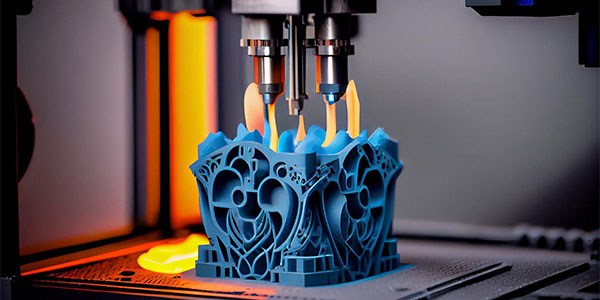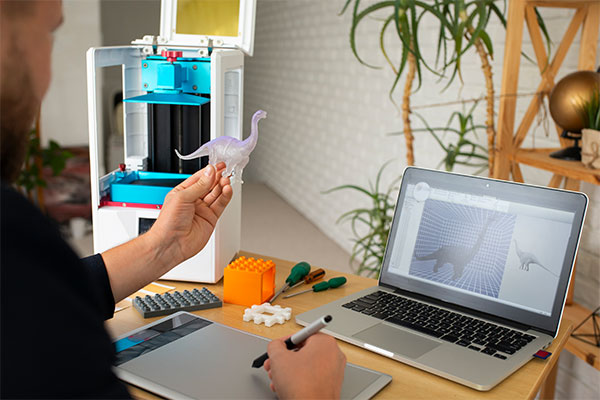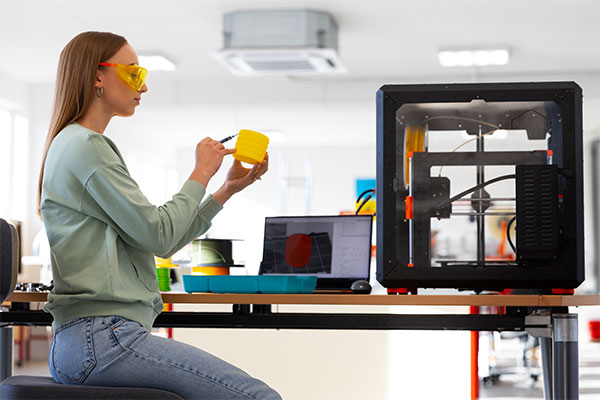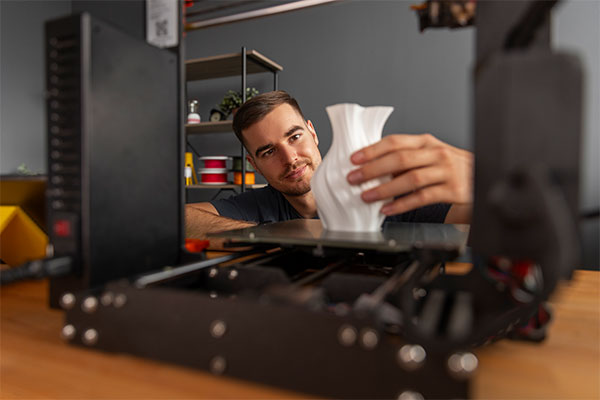3D Printing
3D Printing is one of the key services that LXL Molding offers. We offer state of the art 3D printing applications that will help produce high-definition prototypes within record time.

Why 3d printing service is preferred before injection molded parts manufactured?
Initial molded part design confirmation: Before we start on making your plastic prototype, we will need you to give a confirmation on the initial design of your mold. This is to ensure that your design could be made into a prototype.
Injection molded part prototype design development: After we get your design,we will have our team of experts look through it. They will determine the feasibility of your design, and whether there needs to be modifications made.
Injection molded part design validation: After we have our designing team look through your designs, we will need your validation, whether or not the prototype design is to your liking.
Market testing: One of the key attributes of custom plastic 3d printing are the perfect dimensions. If you use 3D printing, you will be assured that your products will be perfect for market testing.
Why choose LXL Molding for plastic prototype manufacturing?
Advanced prototype manufacturing equipment
When you use prototype injection molding you will be given access to advanced prototype manufacturing equipment. By using this state-of-the-art technology, you could be assured that your prototype’s specifications will be perfect.
Quick quotation for your custom project
If you are interested in getting a quick quotation for your custom project, you won’t have to wait long. Our customer service team will have the product quotation ready for you within the day.
Fast sampling in 1 week
It is always a good idea to ask for a sample of your design, before you invest in a large scale order. We have the ability to provide you with a sample within a week.
Expertised printing experts
We have a team of printing experts that can fulfill all your 3D printing needs. Just give us a sample of your design, and we can make a great prototype mold..
Advantages of LXL Molding's 3D Printing Prototyping Services
3D Printing and prototyping have greatly reduced the turnaround times for designing complex parts, something that used to take long in the past. This has not only improved the quality of the end product but has increased the pace of production significantly to the point that 3D printing service companies are now flexible enough to create complex designs at a moment’s notice. Some of the advantages include the following.
Endless Options: There are millions of possible combinations that can result from using 3D printing services for making prototypes. You are free to use all kinds of materials with varying finishes and tolerances to create high-quality prototypes.
Easy to Use: The technology is not as complicated as many make it out to be. Everything can be made quickly and delivered to the client without a need for sourcing out part of the work to third-party entities. Everything is handled in one place.
Guaranteed Quality: Every raw material used is the best in the market, and this ensures that the end result is of similar build and construction. Our products are made to perfection and function exactly as they are prescribed to.
High precision and Repeatability: The ability of our 3D printing machine to reduce accurate replicas of complex samples as many times as needed ensures that we are able to meet the clients’ needs ahead of the set deadline, allowing them more room to further plan their distribution.
Cost-Effective: You don’t have to pour all your money just to create unique prototypes. We offer cheap services for high-quality products at no extra cost. All you need to do is provide the blueprints for the products you want to be developed, and we handle the rest on your behalf.
Experienced Engineers: We have a team of experienced engineers who have years of work behind them. They know exactly what they are doing and even go out of their way to offer improvements that would make your products even better.
What is 3D Printing?

3D Printing is the process of manufacturing three-dimensional solid objects from nothing but a digital file that is fed through a program that is in sync switching the printing machine using preloaded liquid polymers as the raw material.
The entire process is achieved through the additive processes where the object is created by laying down successive layers of the polymer, which solidifies immediately it is laid dying according to the specifications of the program. Depending on the speed of the 3D Printing machine, you can actually see how the object takes shape slowly.
The process works by combining different components together. It all begins with a 3D model that is either created from scratch on a 3D designing computer program. You can also download any file from a wide range of online libraries that can be found easily. Once you have your printable file, the next thing you have to do is make it ready for the 3D printer in a process called slicing.
A slicing software then cuts up the virtual 3D model into thousands of layers. These layers are fed into the 3D printer through a USB drive or can be sent to it via WiFi or any other file-sharing technology that you’d be comfortable with. Once you have done all that, the sliced layer file is now ready for execution.


The next step would be to make the 3D printing machine ready, and once the file is fed into it, the process can officially begin. Depending on the speed and the size of the file, this could take minutes to hours. You have the flexibility to create any kind of model you want; you are only limited by your imagination.
Selecting 3D Printing Materials
What makes our 3D printing prototype service the best is our ability to work with all kinds of raw materials to create unique products that are in line with what the customers request. Some of the raw materials that we are able to work to produce the very best of well-designed products from scratch include the following:
1, Metal 2, Resin 3, Thermoplastics 4, Stainless Steel 5, Polycarbonate 6, Carbon Fibers
Types of 3D Printing Technologies
3D printing technologies come in varying forms, each designed for a specific function in the market. Their development is usually based on each other and the need to address a void for something that is needed at a particular moment. The following are some of the notable 3D printing technologies in existence right now.
Stereolithography(SLA)
This was the first form of 3D printing technology, and most of the others are based on it. It excels at producing price parts that are of great detail, tight tolerances, and smooth finishes. Stereolithography is mostly used in the medical sector where the creation of anatomical models and microfluidics.
Selective Laser Sintering(SLS)
This is a 3D printing process that melts together powders that are nylon-based and converts them into solid plastic. The fact that products made from this process are crafted using real thermoplastics, they are more durable and perfect for functional testing. However, their surfaces are not as smooth; the process is the best when it comes to making large 3D prints.
Polyjet
PolyJet can fabricate multiple parts with multiple attributes like colors and still make them workable. It is a handy process that can be used for prototyping over molded parts. This is the type of 3D printing technology that you go for when you want a flexible end product that has a rubbery feel to them.
Digital Light Process(DLP)
This is a process that is almost similar to the SLA that makes use of UV light to cure light. This gives the DLP a bigger advantage in terms of speed as it is able to print an entire layer of the model at once. The products from the DLP process are hardened as soon as they are laid down by light, and this allows the product to be handled almost immediately after being created. DLP is good for low volume production of clean and accurate items.
Multi Jet Fusion(MJF)
Another process that makes use of thermoplastics as the raw material, instead of using laser light like most of the other printing technologies, uses an inkjet array for applying a special fusing agent to the bed on nylon powder. This is followed by a heating element that is passed over the bed to fuse everything into one component. The advantage of this process is that it adds consistency to the models that are built; it is a fast process and uses less power compared to most of the other technologies.
Fused Deposition Modeling (FDM) aka Fused Filament Fabrication (FFF)
An FDM printer works by expelling a plastic fiber layer-by-layer onto the forming stage. It’s a savvy and fast strategy for delivering actual models. There are a few occasions when FDM can be utilized for practical testing however the innovation is restricted because of parts having generally harsh surface completes and lacking strength. It is a 3D printing innovation that utilizes a cycle called Material Extrusion. Material Extrusion gadgets are accessible and reasonable of all.

